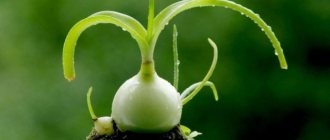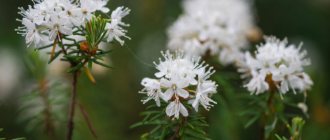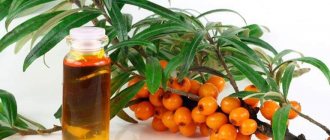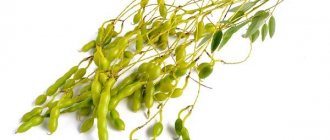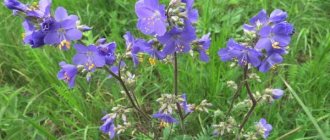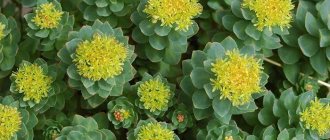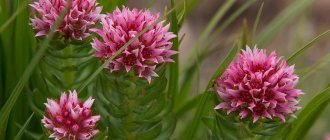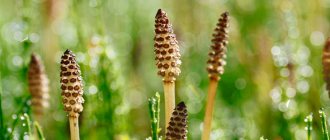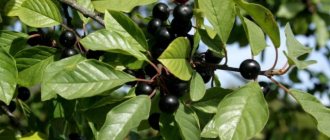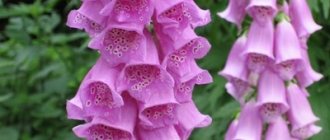Description of the plant
Burnet is a perennial herb belonging to the Rosaceae family. It is distinguished by a long and slender stem up to 120 cm high; the leaves are feather-shaped and located in the basal part of the stem.
The flowers are small, brown-red in color, growing on long stalks and grouped into heads. The grass is characterized by a powerful root system, which is considered rich in healing properties.
Burnet grows in well-moistened soil, near rivers and lakes, and in flooded meadows. It blooms from June to August. At this time, useful flowers are collected, from which tea is usually brewed. The roots are collected in the autumn, when the plant has already faded and fruits appear in the form of nuts with seeds.
What does it look like
The burnet has a thick horizontal rhizome, up to 12 cm long, woody, with numerous long and thin fibrous roots.
Burnet photo:
Appearance (photo) of the burnet. A single stem branches in the upper part, it is ribbed, bare, erect, hollow inside, up to 30−90 cm high.
The basal leaves are large, long-petiolate, odd-pinnate with 7–25 leaflets. The lower leaves are dull bluish-green, at the top they are replaced by shiny dark green leaves.
The flowers of the burnet are small, dark red, sometimes black-purple. They are collected in oval, sometimes spicate-shaped heads. The length of each head is 1−3 cm, they are located on long straight peduncles. The flowers are bisexual with brownish-membranous, elongated, hairy bracts. The calyx consists of 4 sepals, which fall off when fruiting; there is no corolla. Each flower has 4 stamens and 1 pistil. Burnet blooms from July to August.
The fruits are single-seeded tetrahedral dry nuts, 3-3.5 mm long, brown in color. Fruits in the period from August to September. Burnet is also a honey plant.
Composition of burnet
Chemical composition:
- Tannins. They heal the digestive system: improve the processes of food digestion, normalize the functioning of the gastrointestinal tract. They relieve inflammation and have bactericidal properties.
- Organic acids. They promote digestion by secreting gastric juice, break down fats, and prevent the development of harmful bacteria.
- Starch. It has an enveloping effect, relieves various inflammations of the gastrointestinal tract. Normalizes cholesterol.
- Sterols. They reduce the amount of “bad” cholesterol, heal the heart muscle, and strengthen the immune system.
- Vitamin C. Protects and normalizes the immune system, resists viruses and microorganisms.
- Macro- and microelements: potassium, calcium, magnesium, iron, zinc, selenium, iodine, etc. They have a positive effect on the body, strengthen the heart and blood vessels, improve the performance of other systems, remove harmful elements, and relieve inflammation.
- Carotene. Increases defenses and slows down the body's aging process. Helps normalize metabolism.
- Essential oil. Fights bacteria, spasms, relieves inflammation, and has a calming effect.
What diseases does the burnet cope with?
The plant is used to normalize the functioning of the entire gastrointestinal tract system. The composition of organic acids in hemophilia contributes to the functionality of fat metabolism and acid-base balance.
The content of starch and sterols significantly reduces cholesterol levels and normalizes the functioning of the cardiovascular system. Also, these substances enhance insulin secretion and the work of intestinal bacteria in the synthesis of B vitamins.
The content of saponins in the plant contributes to:
- liquefaction and removal of mucous formations from the bronchopulmonary system;
- inhibition of the connection of macromolecules (DNA) into malignant tumors;
- increasing hormonal activity;
- normalizing water-salt balance and removing toxic substances;
- normalization of blood pressure.
Essential oils found in the rhizome of the plant enhance the bactericidal and antispasmodic properties of drugs against hemoptysis, and also have a calming effect on the human nervous system.
Medicinal properties of burnet
Burnet, the medicinal properties and contraindications of which are known to traditional healers, is valued for its hemostatic abilities, therefore it is recommended in the treatment of gynecological problems, bleeding caused by hemorrhoids.
Other healing characteristics:
- bactericidal;
- natural antiseptic;
- astringent;
- relieves inflammation;
- heals;
- antispasmodic;
- calming.
Why do hemorrhoids bleed?
The occurrence of bleeding of hemorrhoids is just one of the symptoms of the disease at a certain stage of the disease. If the patient often complains of itching, pain and prolapse of nodular formations, then bleeding may not be a concern. Blood is more often observed after defecation. It is scarlet in color and can flow in a trickle or simply drip after passing stool. Hemorrhoids with blood occur for the following reasons:
- Diarrhea.
- Chronic constipation. These are the main reasons for bleeding in this disease. Solid feces, moving along the rectum and touching the hemorrhoids, can injure them.
- Childbirth. They often cause cracks in the rectum and the release of blood clots during hemorrhoids in women.
Root and rhizome
The storehouse of healing properties of the burnet is contained in its roots, reaching a length of 12 cm, characterized by a woody, thick and horizontal rhizome.
The dried and ground root is used in the treatment of the following diseases:
- diarrhea of various origins;
- bleeding in various organs (uterus, lungs, intestines, stomach, kidneys, etc.);
- heavy menstruation;
- ulcerative colitis;
- chronic enterocolitis;
- inflammation of the oral cavity;
- various skin lesions;
- hemoptysis.
The root is used in various forms: lotions, compresses, powder; sitz baths (for hemorrhoids); douching (for gynecological ailments).
Symptoms of the disease
The first symptoms should alert a person; they are associated with unusual sensations in the rectal area; there may be a feeling of heaviness that does not go away even after going to the toilet. Itching, burning occurs in the anus, and sometimes caustic mucus is released. The progression of the disease is gradually observed: sharp pain appears during the process of defecation, increased body temperature, and then nodes form.
Signs of internal hemorrhoids
The main symptom is the appearance of hemorrhoids, which are located inside the anus under the rectal mucosa. As a rule, they are painless. At the initial stage of the appearance of internal nodes, slight bleeding may be observed after defecation. The more advanced the pathology, the larger the nodes and the more pronounced the inflammatory process of the intestinal walls and anal area. This can cause bleeding and even anemia. The main symptoms of internal hemorrhoids are:
- rectal bleeding;
- pain during bowel movements;
- feeling of incomplete emptying;
- loss of nodes;
- inflammation of hemorrhoidal cones;
- anal fissures;
- itching in the anus.
Characteristic symptoms of external hemorrhoids
The first unpleasant symptoms of the external form of the disease bother a person even before the expansion of the venous plexuses. The onset of the disease makes itself felt by irritation and itching in the anal area, pain during bowel movements during exacerbations, slight bloody discharge due to the presence of cracks and damage to the mucous membrane during bowel movements. There may be slight swelling of the anus and the presence of bumps of different sizes around it.
Leaves and stems
The leaves and stems contain fewer tanning elements, but are no less medicinal. Their main purpose is to stop blood loss.
These parts are used in the following cases:
- bleeding of various origins;
- hemoptysis;
- gum damage;
- tuberculosis.
The leaves and stems have wound-healing properties, so they are recommended to be used fresh for minor skin damage.
Harvesting
Rhizomes and roots of hemophilia are used as medicinal raw materials. Harvesting takes place during the fruiting period. The optimal period is when the seed pods have already formed in place of the flowers. But not completely dry. Harvest time is at the end of August - September. The burnet root is completely dug up, including the main rhizome and small roots. Tributaries are not cut off.
The raw materials are cleared of soil, washed with cold water, and the elements of the above-ground part of the plant are removed. Then the roots are cut into pieces no more than fifteen centimeters long. They are left outdoors for several hours. Then the raw materials are dried until ready in the open sun in dry and hot weather. But if the weather is humid, they are put away in attics, where they are scattered on paper or burlap in a single layer.
You can also dry the rhizome in the oven, setting the temperature to no more than forty degrees. But it is important to cover metal baking sheets with parchment paper. This is done in order to avoid contact of raw materials with iron, since the medicinal root turns black from such contact.
The raw material can be used for five years, as it retains its healing properties. But it is important to provide it with the correct storage conditions. Of course, a dry place without access to light is suitable for this. The roots are placed in paper bags or wooden boxes. The herbaceous part is not used for medicinal purposes, but is consumed fresh and added to salads and soups.
Burnet decoction
Burnet, the medicinal properties and contraindications of which you need to know before use, is the raw material for the decoction:
2 tbsp. l. the root part is heated in a water bath in 1 tbsp. water 30 min. The resulting broth is allowed to cool (10 minutes), filter, squeezing out the remaining mass well. Add boiled water (warm), bringing the volume of liquid to 200 ml. Drink 1 tbsp of the product on a full stomach. l. no more than 6 rubles/day. Store refrigerated for no longer than 2 days.
Properties of the decoction: against microbes, stops bleeding, astringent effect.
Please note that it is recommended to use enamel dishes to prepare this drink.
Diet
A proper diet should contain sufficient amounts of fiber, which promotes the regular passage of stool. It is important to drink plenty of liquid every day, but it is better to avoid spicy, salty, fried foods altogether. You need to eat soups, cereals, salads, fruits, lean meats. Be sure to consume vegetable oils; they stimulate intestinal motility. When creating a weekly food menu, you need to consider:
- The best porridges are buckwheat, pearl barley, barley, oatmeal, and rolled oats.
- Prefer wholemeal bread.
- Avoid vegetables containing starch.
- Be sure to eat broccoli, cauliflower, carrots, cucumbers, zucchini, and beets.
- Eat more apples, apricots, prunes, bananas, dried apricots.
- Eat 60 g of bran every day; it will replenish the body's need for dietary fiber.
- For meat, boiled chicken fillet and turkey meat are suitable.
Source of the article: https://sovets.net/14233-gemorroj-krovotochit.html
Infusion
The infusion is recommended for intestinal disorders, lesions of the mucous membranes, including conjunctivitis:
- 300 ml of cold boiled water pour 1 tbsp. l. rhizomes, leave to brew for 8 hours. Filter.
Use ¼ tbsp. 3 times/day before meals.
Use for diarrhea in children
Hernial can be used for diarrhea in a child of any age. The dosage and concentration of the decoctions and infusions listed above should be halved for children, and threefold for treating an infant. Hernia medicines are usually used to treat dysbiosis, dysentery, flatulence, diarrhea, gastritis, colitis and other diseases of the digestive system in children. This is an excellent analgesic, bactericidal and antispasmodic agent, with virtually no side effects, therefore it is recommended for the treatment of intestinal diseases and diarrhea even in a newborn child. In addition to taking medicinal decoctions orally, they are also used for cleansing enemas in both children and adults.
Tincture
The tincture from the herb in question is also characterized by healing properties:
- The rhizomes are crushed, filled with 0.5 three-liter jars, and filled to the top with vodka. Insist for 3 months. Filtered.
- Therapy: 2 tbsp. l. 5 r/day after meals. When used externally, the tincture is used to lubricate fresh or hard-to-heal skin injuries.
Please note that you can use the tincture after a month, but you must filter it only after 3 months.
Healthy herbal tea
Making burnet tea:
- Mix the rhizomes and leaves of the medicinal herb in equal proportions. Pour 1-2 tsp. mixture 250 ml of boiling water and drink a glass 2 times a day.
Healthy tea is also prepared from the flowers of the herb, using them alone or in combination with the root part/leaves.
Use in cooking
The leaves of the young plant taste very pleasant - they resemble cucumbers. Some people detect the taste of melon and even nuts in the grass. But the older the plant gets, the more bitter its greens become. Dry weather also contributes to the bitter taste.
Oriental cooks often add club-shaped burnet inflorescences to soups to give them a special taste. In Spain, fresh herbs are added to lemonades and wines for a delicate mint aroma. In many European cuisines, young burnet leaves are used for sandwiches, salads, casseroles, and also for flavoring sauces and vinegars.
The plant goes well with cheese, tomato sauces, eggs, basil and oregano. In some countries this herb is used in brewing.
Use of Burnet
In order for treatment to be as effective as possible, it is recommended to take into account the nature of the disease and its location. The plant in question treats many ailments, so it is important to know how to take it correctly in a particular case.
Please note that self-prescription of the drug is not encouraged. In order not to harm the body, consultation with a specialist is required.
Application in gynecology
Burnet is used to solve the following gynecological problems:
- menstruation with heavy blood loss;
- uterine hemorrhages;
- during the period of postoperative intervention (abortion);
- cervical erosion;
- fibroids;
- inflammation of the ovaries and appendages.
The therapeutic effect is achieved due to the ability of the herb to prevent blood loss, constrict blood vessels and contract muscle tissue, have a bactericidal effect, and relieve inflammation.
Application of the plant:
- Infusion for bleeding. 1 tbsp. l. a collection of herbs burnet (rhizome), shepherd's purse, plantain, knotweed (root part), licorice, rose hips, taken in equal volume, pour 2 tbsp. hot water. Leave in a thermos for 12 hours. Filter. Therapy: 0.25 tbsp. 5 r/day, 60 days.
- Douching for blood loss and inflammation. Steam 1 tbsp with a glass of boiling water. l. ground roots for 3 minutes, wrap and leave to brew for 30 minutes. Strain, douche with a warm solution 2 times a day.
- Decoction for fibroids. A glass of hot water is poured into a collection of burnet and boron uterus (1 tbsp each). Simmer for 30 minutes. Filtered. Therapy: 10 ml 3 times a day, up to 2 months.
- Douching for fibroids. 3 tbsp. l. collection from herbs: burnet (rhizome, 1 tbsp.), boron uterus (1 tbsp.), wormwood (0.5 tbsp.), bergenia (root part, 0.5 tbsp.), oak and aspen bark (1 tablespoon each) pour 1 liter of liquid and boil for 20 minutes. Leave for 6 hours, strain. Carry out douching 2 times a day. Do not use the decoction during menstruation or the week before.
For intestinal infections
The beneficial properties of burnet make it possible to treat various intestinal infections with it, but do not forget about contraindications so as not to aggravate the course of the disease.
The plant is characterized by the ability to restore microflora and improve digestive processes, therefore it is suitable for combating dysbiosis that has arisen while taking antibiotics:
- 15 g of burnet rhizomes are poured into 200 ml of hot water and heated over low heat for 20 minutes. Turn off the stove and leave the drink to brew for 1 hour. Filter. Drink 10 ml decoction up to 6 times a day.
The following recipe will help cleanse the body and restore microflora in case of dysentery:
- pour 1 tbsp into a glass of hot water. l. root part, heat the broth for at least 30 minutes, cool and filter. Use 1 tbsp. l. drink every 2 hours
For intestinal flu, a decoction of 3 tbsp will help. l. roots and 3 tbsp. water. The raw material is poured with liquid, heated over low heat for 30 minutes, and filtered. Therapy: the resulting volume is drunk throughout the day. Tea made from the rhizomes of the herb is characterized by astringent and bactericidal properties. It is recommended to be used for intestinal disorders of various types:
250 ml of liquid is steamed with 2 tsp. raw materials and leave to brew for 10 minutes. The drink is filtered and drunk 2 tbsp. in a day.
Burnet for hemorrhoids
The ability of the medicinal herb to prevent blood loss and relieve inflammation allows it to be prescribed in the treatment of hemorrhoids. In addition, products based on it will relieve swelling and have a bactericidal and wound-healing effect. After several sessions, the hemorrhoids will shrink and the pain will go away.
For oral administration and sitz baths, use a decoction: pour 1 tbsp into a glass of boiling water. l. ground roots, heat for 30 minutes, then leave for 2-3 hours. Strain. Therapy: 10 ml orally (preferably on an empty stomach) 2 times a day or add the resulting volume to sitz baths.
Burnet is effective in treating hemorrhoids using baths
Microclysters with burnet:
- 5 tbsp. l. rhizomes are mixed with 0.5 liters of sunflower oil, heated over low heat for 1 hour. Remove from the stove, wrap and leave for 24 hours. Filter. The finished product is stored refrigerated.
- Microclysters are done before bedtime (the intestines must be emptied) with warm oil (36 C).
- The product is also suitable for lotions: soak a sterile gauze bandage with it and fix it to the sore spot for 20 minutes.
Burnet candles:
- root part – 5 g;
- cocoa butter – 20 g;
- pumpkin seed oil – 3 drops;
- propolis (tincture) – 2 drops;
- mint and chamomile esters - 1 drop each.
Preparation: melt the cocoa butter, add the root part and other components to it. The resulting mixture is poured into foil tubes - future candles. The finished tubes are twisted on both sides and put into the cold. Therapy: suppositories are placed 1 time per day at night, course duration is 1 month.
For skin inflammation
Burnet, the beneficial properties and contraindications of which are known to dermatologists, has found its use in the treatment of skin diseases:
- wounds, abrasions;
- bruising;
- bedsores;
- burns;
- allergic rash, dermatitis;
- eczema.
In the treatment of bruises, bruises, and small abrasions, it is recommended to make a poultice: 3 tbsp. l. The plants are scalded with hot water, wrapped in any sterile cloth and the resulting compress is applied to the problem area.
When treating bedsores, rotting wounds, and weeping eczema, it is recommended to wash them with a decoction of burnet, prepared from 2 tbsp. l. ground roots and 500 ml of boiling water.
In the treatment of allergic rashes and dermatitis, an infusion for topical use prepared according to the following recipe will help: 400 ml of hot water, pour 3 tbsp. l. rhizomes and boil them for 30 minutes, then leave to brew for at least 2 hours and filter.
To treat burned skin, it is recommended to mix 1 tsp. ground roots with sesame oil. The resulting paste is applied to the affected areas.
What are the benefits and benefits of burnet herb?
The medicinal properties are due to the content of a significant amount of vitamins and minerals and other important substances. Burnet treats the following pathologies:
- intestinal bleeding;
- poisoning;
- haemorrhoids;
- infectious diseases caused by E. coli or salmonella;
- inflammatory processes in the oral cavity;
- burns and wounds;
- conjunctivitis, blepharitis;
- diarrhea;
- gastritis;
- cystitis;
- kidney diseases.
What helps and medicinal properties of burnet root
The raw materials contain tannins, organic acids, vitamins and elements that produce the following effects:
- astringent;
- hemostatic;
- vasoconstrictor;
- anti-inflammatory;
- antibacterial;
- painkiller;
- tonic;
- restorative;
- antiallergic;
- enveloping.
The use of medicines, including burnet roots, allows you to:
- relieve intestinal spasms;
- maintain optimal water-salt balance;
- normalize collagen production and liver function;
- stimulate bone tissue restoration;
- calm the nervous system;
- improve metabolism.
Important! The effectiveness of burnet treatment has a scientific basis. The perennial is actively used in official medicine.
Medicinal properties of burnet herb in gynecology, for bleeding in women
The grass has astringent and bactericidal properties. The effects produced make it possible to use the plant for the treatment of diseases of the female reproductive system. Among the indications for the use of medicinal burnet in gynecology are:
- heavy menstruation;
- pain syndrome accompanying critical days;
- cervical erosion;
- myomatous nodes;
- bacterial vaginosis;
- colpitis caused by trichomoniasis.
For heavy bleeding, it is advisable to use decoctions and infusions of red cap. Medicines cause vasoconstriction and contraction of the uterus. Douching with solutions from burnet is recommended for cervical erosion and benign tumors of the uterus, and infectious processes of the vagina.
Compositions from the raw materials of fieldfare are taken to prevent the growth of myomatous nodes
Medicinal properties of burnet for children
Products based on blackhead are good for health. The pharmacological effect of drugs from the rhizomes and roots of burnet determines the use of redcap in children of different ages. However, before including drugs in therapy, it is important to consult a pediatrician.
Medicines from red cap are prescribed for the following indications:
- intestinal colic and infections, such as dysentery;
- diarrhea of a gastrogenic or toxic nature, enteritis;
- diseases of the oral cavity and gums, in particular stomatitis and gingivitis;
Aqueous solutions of burnet are useful for treating ulcers, burns, and scratches.
In the Middle Ages, the aroma of redcap was considered healing. Perennial pollen was recommended to be inhaled by children suffering from neurological diseases.
Medicinal properties of burnet for diarrhea and diarrhea
The plant is destructive to pathogenic microorganisms that cause disruption of the digestive system. In particular, burnet is effective against E. coli, salmonella and bacteria of the typhoparatyphoid group. These pathogens often cause diarrhea.
The use of burnet-based products can eliminate diseases of the digestive system
Is it possible for children?
Burnet is allowed in childhood, starting from birth. Drinks made from rhizomes are recommended for diarrhea and other intestinal infections. The healing remedy will cleanse the body of harmful bacteria and viruses, improve the functioning of the digestive tract, restore the intestinal microflora, and also have a disinfecting effect.
The daily intake for children under 1 year should not exceed 200 ml , for older children - 400 ml.
Decoction for infants:
- Preparing the drink. 2 tsp. roots pour 1 tbsp. boiling water, simmer for 30 minutes, filter without insisting.
- Application. 25 drops drink is diluted in 1 tsp. cooled boiled water and give it to drink 30 minutes before meals 4 times a day. Duration - until complete recovery and then another week to consolidate the result.
- Effect. The baby's stool returns to normal and intestinal colic goes away.
Infusion for children over one year of age: steam 2 tbsp with a glass of hot water. l. ground roots, heat for 30 minutes, leave to brew for 1.5 hours, filter. Give 5 ml 4 times a day until complete cure, then continue the course for another week, reducing the frequency of doses first to 3, then to 2 times a day.
Burnet is recommended in the treatment of stomatitis (sore throat) and conjunctivitis in children:
- For the oral cavity. 1.5 tbsp. l. boil the roots in 200 ml of liquid, heat for 10 minutes, leave for 30 minutes, filter. Rinse up to 5 times a day.
- For eyes. Steam 1 tbsp with a glass of water. l. ground rhizomes, leave to simmer for 15 minutes. Leave for 2 hours, filter. Wipe both eyes with a sterile cloth soaked in the prepared product, up to 5 times a day.
Application in official and folk medicine. Instructions
Before using products containing herbs, you need to become familiar with how they are used.
During pregnancy
For women during pregnancy, treatment with products based on burnet is contraindicated, as they have a contracting effect on the muscles of the uterus and can provoke premature birth. Their use is not recommended during lactation, since tannins entering the newborn's body with mother's milk can cause constipation.
medicinal products with the plant have a positive effect on maintaining women's health
Application in gynecology
Liquid burnet extract has a hemostatic and antiseptic effect. For fibroids and tumors, the drug is prescribed for internal use. When treating inflammation of the female genital organs, it is used as a douching composition. It is advisable to use infusions and decoctions prepared on the basis of this medicinal plant as prescribed by the attending physician.
Burnet has a positive effect in the treatment of the following pathologies:
- uterine bleeding of various etiologies;
- cancer and precancerous diseases of the genital organs;
- genital infections.
In addition, the herb helps with heavy periods.
Use in children
The beneficial properties of this plant make it possible to use it in pediatrics. Weak solutions of liquid extract are allowed for children starting from infancy. Therapeutic measures should only be carried out under the supervision of a physician. Infants are allowed to take no more than 200 g of a 10% solution of rhizome infusion per day. For older children, the daily dose can be increased to 300-400 g.
The plant has an antimicrobial and disinfecting effect, so pediatricians often prescribe its root to children with diarrhea.
In order for the therapeutic effect to occur faster, you need to adhere to the following recommendations:
- Give your child water more often;
- limit the consumption of fresh milk, replacing it with fermented milk products;
- completely eliminate fresh fruits and vegetables from your diet.
traditional medicine uses burnet roots to prepare medicinal infusions for the treatment and prevention of various diseases
Burnet during pregnancy
Burnet, the beneficial properties and contraindications of which are important to know before use, is not recommended during the period of waiting for a child and feeding with milk. The plant's ability to stop bleeding and have an astringent effect can adversely affect the process of gestation if drinks based on it are consumed orally.
However, it is allowed to use herbal remedies for local treatment of skin ailments, as well as for taking sitz baths in the treatment of postpartum hemorrhoids.
Where does it grow
The burnet's growing area is quite extensive. The grass is distributed throughout Europe, North America, the temperate climate of East Asia, and some regions of Central Asia. In Russia, it can be found in the Middle Zone, Siberia, the Far East and the Caucasus Mountains. In the Vologda, Ivanovo and Kostroma regions it is listed in the Red Book.
Burnet prefers moist soil. It grows in flooded meadows, forest edges, cliffs, in thickets of bushes, along the banks of rivers and swamps.
Contraindications
In moderate doses and with short-term use, no longer than 2 months, burnet does not have any negative effect. Side effects include minor allergies and gastrointestinal upset.
However, the plant has a number of contraindications:
- individual aversion to herbal components;
- the presence of vascular thrombosis;
- hypertension (the grass provokes a narrowing of the vascular system);
- the presence of regular headaches due to hypertension;
- expecting a baby and lactation period.
In addition, products based on the herb in question should be stopped if constipation develops, since the substances they contain slow down the functioning of the intestines.
Contraindications and harm of burnet to the body
Sometimes it is prohibited to use burnet as a medicinal product, since the plant has contraindications. Among them:
- Individual intolerance. In rare cases, a person may experience various allergic manifestations caused by the use of medicinal herbs. In this case, the first signs of an allergy are itching, redness of the skin, rash, and worsening breathing.
- Blockage of blood vessels. Since burnet has the ability to constrict blood vessels, its use leads to a deterioration in blood flow. This often causes high blood pressure, which in turn causes complications (for example, severe headaches).
- Constipation. The herb has the ability to strengthen, so it should not be used for constipation.
- Problems with liver function.
- Pregnancy and lactation period.
It is important to note that long-term use of the herb leads to increased blood clotting.
And an overdose can provoke negative manifestations:
- headache;
- attacks of nausea and vomiting;
- irritation of the gastric mucosa.
You should also remember that using the herb to stop internal bleeding at home is dangerous. The cause of the pathological condition should be identified. This requires consultation with an experienced specialist. Self-medication often leads to dangerous complications and even death.
See also:
Cocklebur (herb) - medicinal properties and contraindications, how to take
